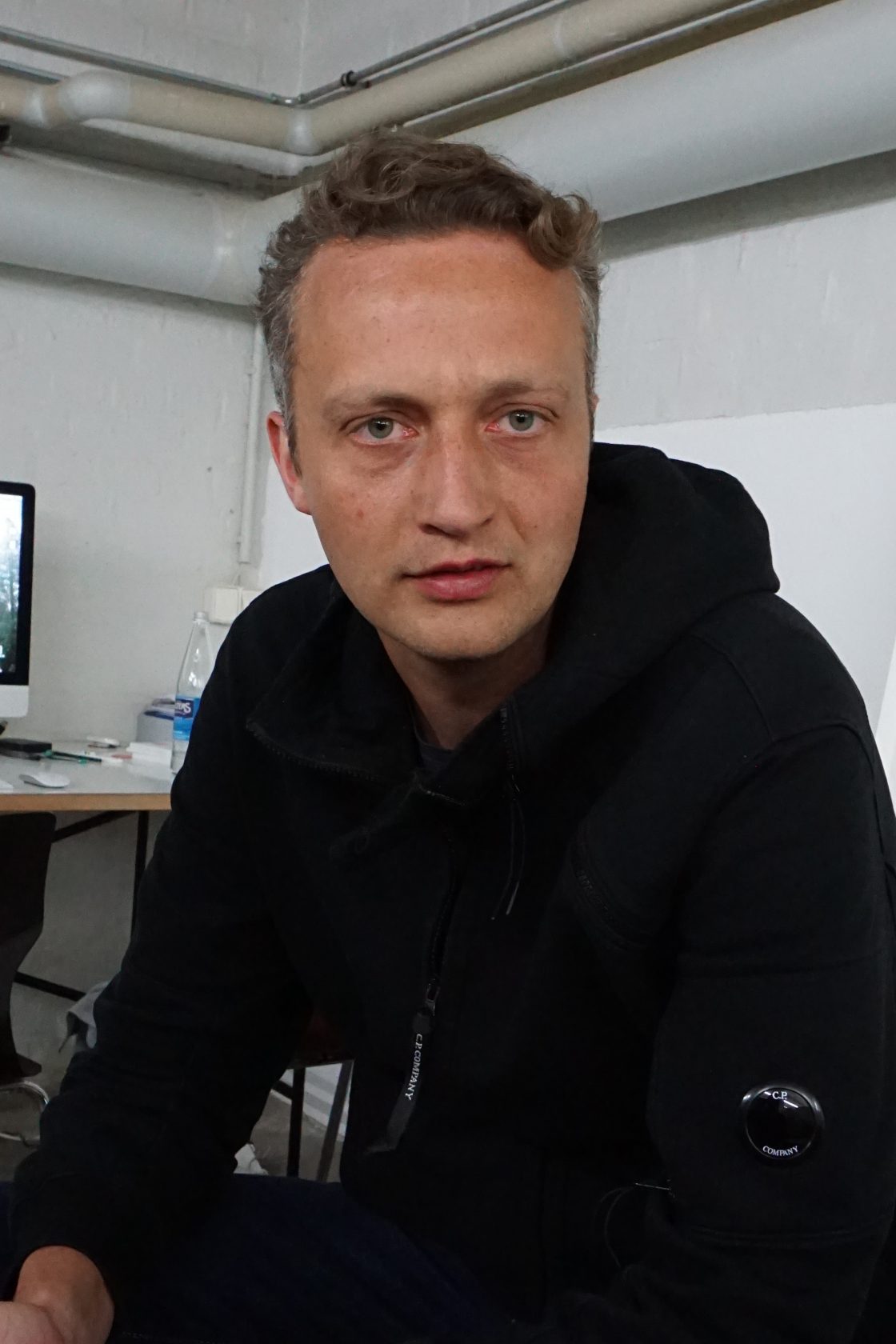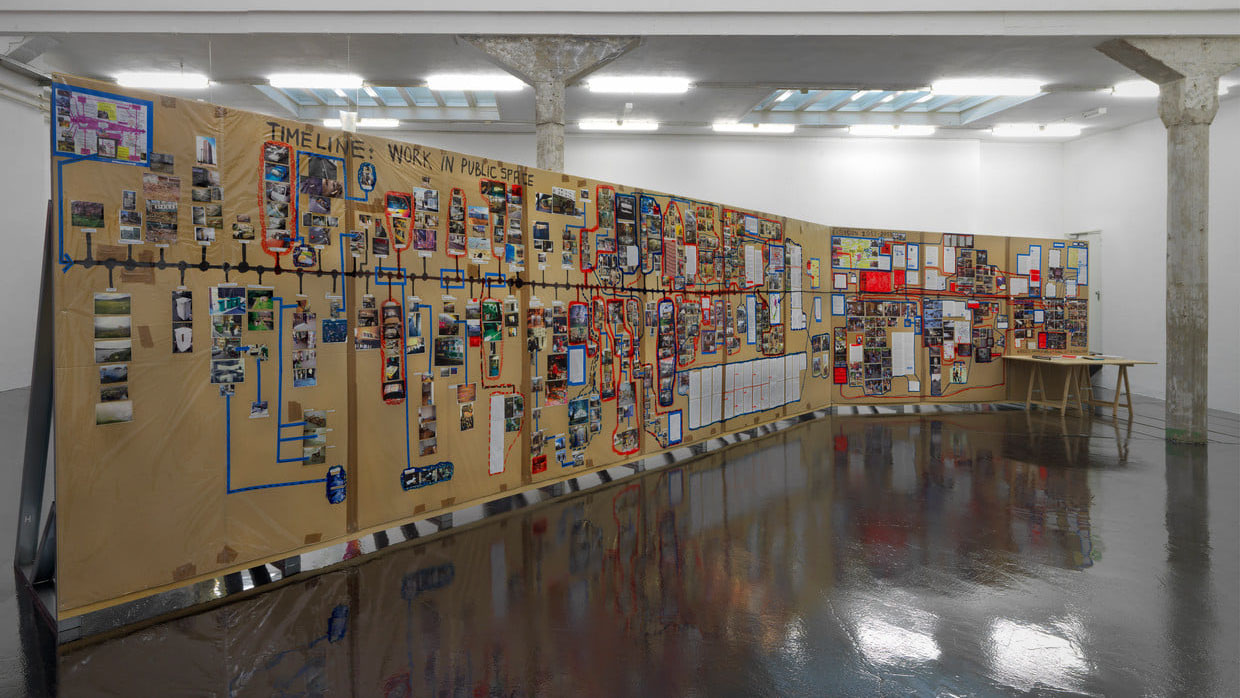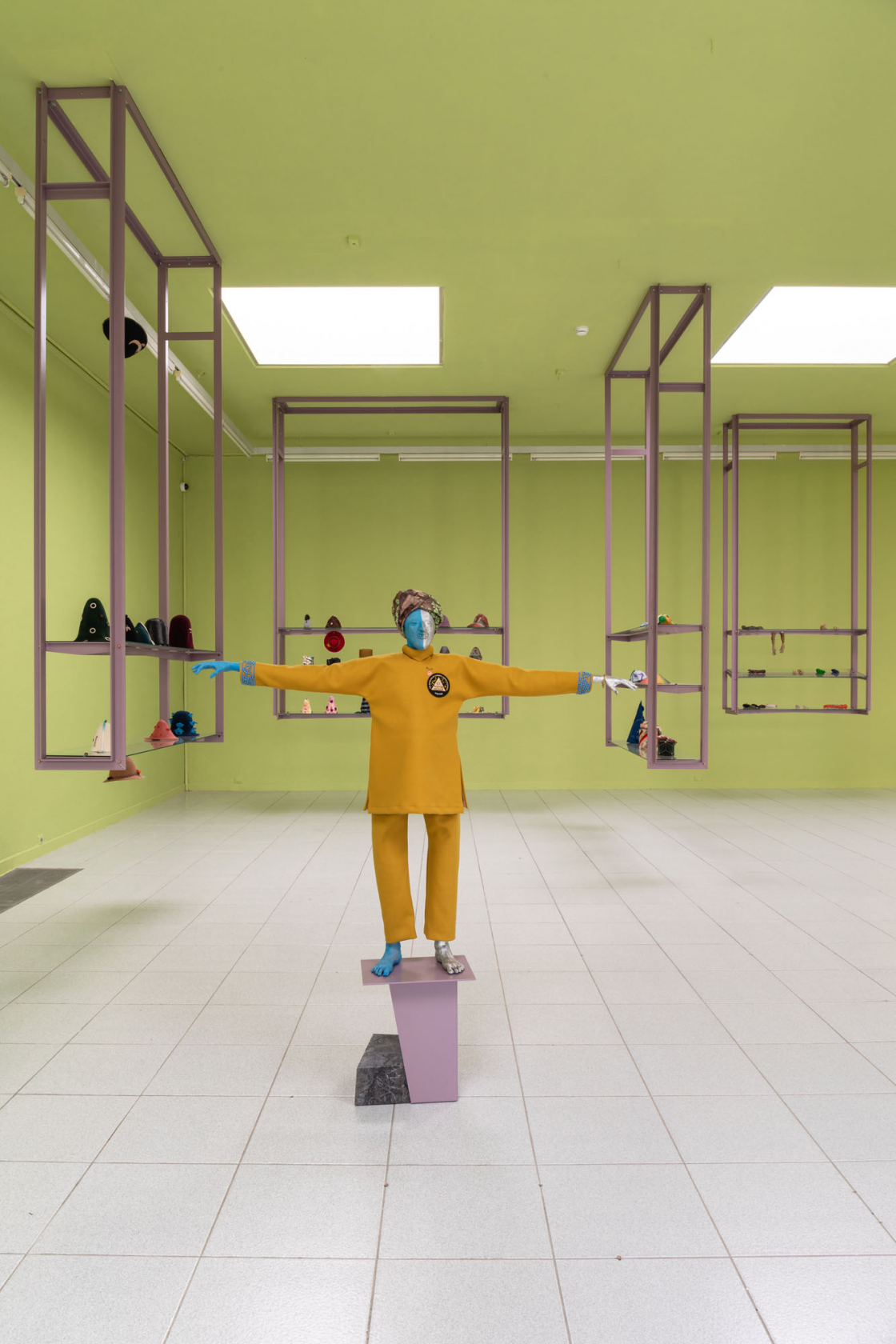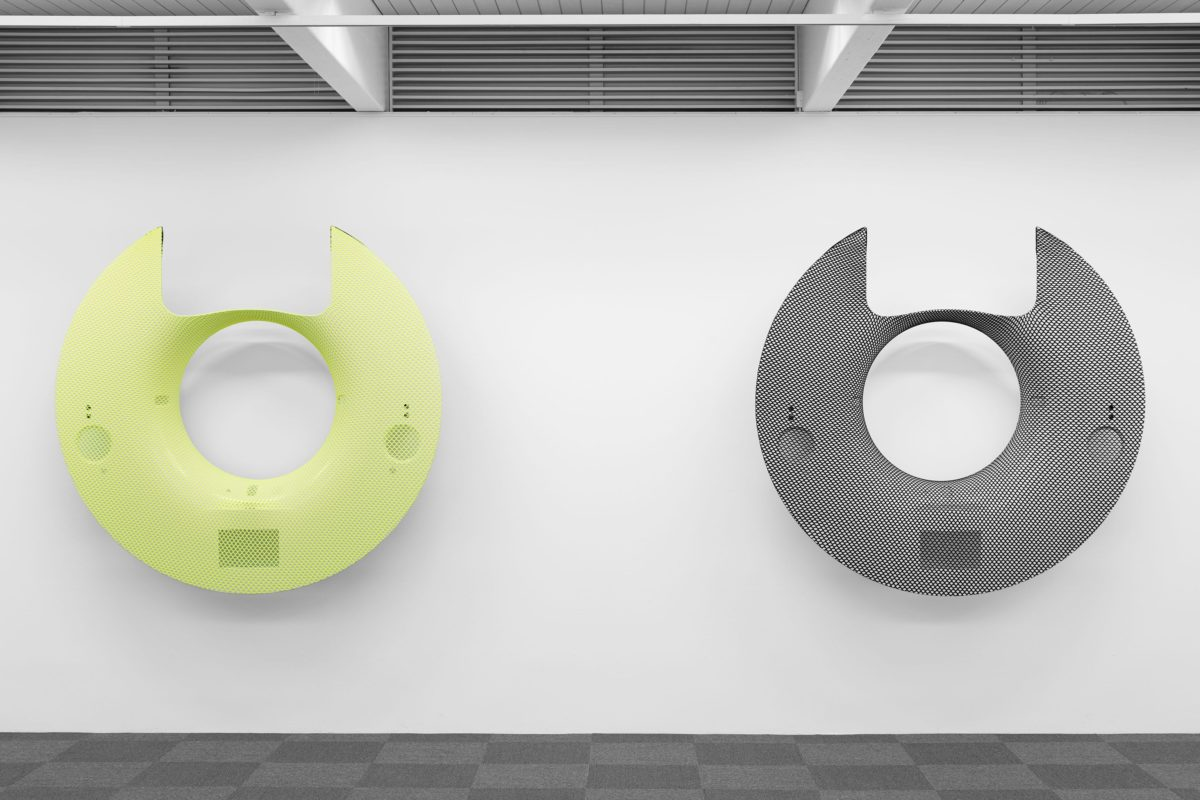Stroom Invest interview / curator Melchior Jaspers
Melchior Jaspers studied Art History and Business Administration. He is now working as an exhibition maker and as an art advisor for the Chief Government Architect (Rijksbouwmeester): “I guide the entire process from the selection of an artist to the actual delivery of the artwork.”
Mirjam Verloop: You are one of the curators participating in Stroom Invest Week at the end of September. How is it to work with recently graduated artists or artists in general?
Melchior Jaspers: In general, very interesting. Usually, I come across their work via other artists, in a magazine, online or in museums or galleries. Either their artwork fascinates me or it pushes me away. If it stays in my mind for a while, I realise that I have to do something with that artwork or with that particular artist.
I always find the word curator complicated. I prefer the Dutch word tentoonstellingsmaker, a maker of exhibitions. Organising is a major part of the job and I feel the work of curators should be dedicated to the artworks as well as to the artist. Sometimes exhibitions are organised around a theme; someone comes up with a theme and the curator selects artists related to that theme. That is one way of working, but it is not how I do it. I keep my eyes open all the time and that is how I get in touch with an artist or an artwork. It is my main starting point.

When you get in touch with an artist or artwork, do you take the initiative of organising an exhibition?
Yes, though sometimes an institution asks me. Whether you are an artist or working in the art scene as a writer, a curator or an organiser of events, you cannot allow yourself to sit down and wait until people reach out to you. Especially not at the beginning of your career. That is why I take the initiative. The exhibition in Nest in The Hague, 7 year old me, was an example. I collaborated with Julia Mullié to make an exhibition featuring Wim T. Schippers and Daniel van Straalen.
Julia and I were drinking a cup of coffee when we started talking about artists that fascinate us. We wondered which artists aren’t often shown in museums or galleries, but do make good quality art. We came up with Wim T. Schippers, who has had little attention in the last few years. The idea was to look for an artist from our generation who works in a similar way to Wim T. Schippers. That artist was Daniel van Straalen. We contacted the artists ourselves and made an appointment with Nest. They agreed and we organised the exhibition, doing everything from selecting the artworks to finding funding.
Another example is the exhibition speak memory in W139 in Amsterdam. I collaborated with Anami Schrijvers, an artist and filmmaker. We wanted to make an exhibition in W139, and with that idea in mind, we contacted the people from W139. It is unusual, for sure. Museums and art institutions make exhibitions, that is one of their main tasks. If you don’t work at an institution, but knock on their door to tell them that you have an idea for an exhibition, that is somewhat exceptional.
I take the initiative quite often. Arthur Steiner, a friend, and I hired an exhibition space in Amsterdam a couple of years ago. We showed artworks that needed more attention, artworks that were amazing in our eyes. This way of working gives me freedom. Of course, I have to take all kinds of things into account, but I can also do what I want. It works well when I closely collaborate with artists in organising the exhibition and arranging the space. It is fun, interesting and gives me lots of energy. I realise that I can still be happy with the result and enjoy the process, even if no one shows up at the opening.

When do you consider your exhibition good enough for the opening?
You have to have the confidence that it will be good. And you have to leave room for any last-minute changes, to add something in or to leave something out. It could also be something major. It will make you nervous when the opening night is getting closer and closer, but it will be fine if you believe in it.
Major institutions work systematically. They have a detailed plan and they know months ahead what the exhibition will look like. It has become more professional over the last few years. That has its advantages, but there is little room for any last-minute changes. I think that the pressure to decide in the nick of time is valuable.
Do you make any changes to an exhibition after the opening?
I have done that, yes. Perhaps it is comparable to an artist who creates a work. It will be shown at an exhibition and then it will go back to the artist’s studio. After a couple of years, the artist looks at it again, with different eyes, and makes a change. I have something similar with exhibitions. I have also added artwork to an exhibition in the final phase. The work was not on the initial list, but I appreciated the work and thought that it could enrich the exhibition.

You have talked about taking the initiative and approaching art institutions. Is it always successful?
I work three days a week as an art advisor for the Rijksbouwmeester. Next to that, I work on different projects, such as writing and making exhibitions. Sometimes these things are successful and sometimes not. I understand that not every museum or art institution is open for initiatives from outside the organisation. And sometimes the timing isn’t right. Occasionally things come back. Francis Upritchard, for example, is an artist from New Zealand that I admire and would like to work with. I have the confidence that it will happen one day.
What are you currently working on?
As an art advisor for the Rijksbouwmeester, I supervise around fifteen assignments. I guide the entire process from the selection of an artist to the actual delivery of the artwork. There is a committee for each assignment which usually consists of an architect, a project manager and people working in the building. Generally, people who are not working with art on a professional basis. We discuss a longlist, which results in a shortlist and eventually one selected artist. I see myself as a translator in this process. I guide both sides, the project manager on one side and the artist on the other. I try to make the process as easy as possible for all of them because if the process goes smoothly there is more room for the artist to do what he or she wants.
I am also working on a few exhibitions. One will be organised in February 2021 in Museum Het Valkhof in Nijmegen. The work of Folkert de Jong will be presented together with ancient Greek and Roman collection items. Besides that, I am preparing two presentations for the C.o.C.A. committee in Rotterdam and I am in the process of making an exhibition for Galerie Tobias Naehring in Berlin and at Fragile also in Berlin.
Can you elaborate more on what a good exhibition is?
A good exhibition is the result of high-quality artworks. One will see all or nothing in a high-quality artwork. The artwork will touch you emotionally, it will embrace you, or on the other hand, the artwork seems confusing or it pushes you away. I think high-quality art has one of these two. There is no middle ground. As an exhibition maker, you can ensure that a good collection of artworks will be even better when brought together, that there will be some degree of synergy.

Do you see a common theme in the artworks that appeal to you?
I love a variety of artists and artworks. To name a few: Yngve Holen, Abubakar Mansaray, Dan Zhu and Alex Katz. From more tech and experimental works to analogue and craftmanship. From artistic research to classic forms of art. I was in Museum Beelden aan Zee in Scheveningen two weeks ago and the work on display, by Germaine Richier, was excellent. Out of this time, but it appealed to me. It is like my musical taste. I love deep house and minimal, but also hip-hop and classical music.
Taste changes as well. It is interesting to see that your belief of what quality is, changes over the years. When I was fourteen years old, I worked for a small auction house in Hilversum. I eventually had enough of 19th-century mahogany side tables. But now, years later, I can see the quality of such a table. The way it is made, the size, the shape. It is fascinating. You sometimes meet people that love a certain art movement or artist and keep loving it. But I can be fascinated with something for five or ten years, and then it changes and I don’t appreciate it at all. It can also go back and forth.
What do you think is the reason for that?
Perhaps because I see more, I think about different things, I meet and speak to new people. Perhaps because I get older. I can see that I appreciate things again or start to enjoy them for the first time. I didn’t like eggshell porcelain for a long time, but now I find this porcelain stunning.
Do you like the change?
Yes, I do like the variety and I am happy to work the way I do currently. For the moment, this is valuable. I am not only working with different artists, but I can also work with public servants as part of my job for the Rijksbouwmeester. I learn about processes and the more formal side of things. That mix is very interesting.
Is there something you would still like to learn?
The perfect front crawl.
Swimming?
Indeed. I started swimming and cycling again during the lockdown as I had more time. I continued doing so and I still swim in the mornings.
Who is, or was, your mentor?
In a general sense from psychology, it appears that women look at their mothers, their aunts or their grandmas and men look at their fathers, uncles and grandpas. I learned a lot from my family members and friends. Professionally, I learned much from the artists that I worked with. While I was studying art history, I worked at Galerie Paul Andriesse. Paul taught me to look at art in a certain way. It was practical and intellectual knowledge that complemented the more theoretical knowledge I gained at university. Theory and practice are a perfect fit. I learned a lot from Paul in an important period of my life.
That would perhaps be my advice: keep learning by doing. Of course, you will run into things that don’t work, but you can use this experience the next time and improve.
Many thanks to Nicole McNeilly for her feedback.
Stroom Invest Week is an annual 4-day program for artists who were granted the PRO Invest subsidy. This subsidy supports young artists based in The Hague to develop their artistic practice so that artists and graduates of the art academy can continue to live and work in The Hague. To give the artists extra incentive, Stroom organises this week consisting of an evening of public talks, studio visits, presentations and several informal meetings. The intent is to broaden the visibility of artists from The Hague through future exhibitions, presentations and exchange programs. Stroom Invest Week 2020 will take place from 21 to 25 of September.